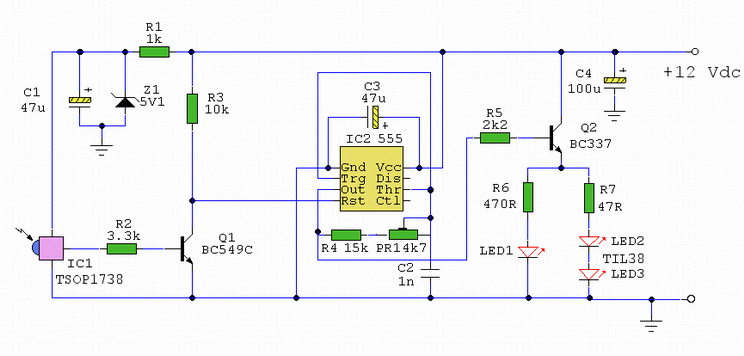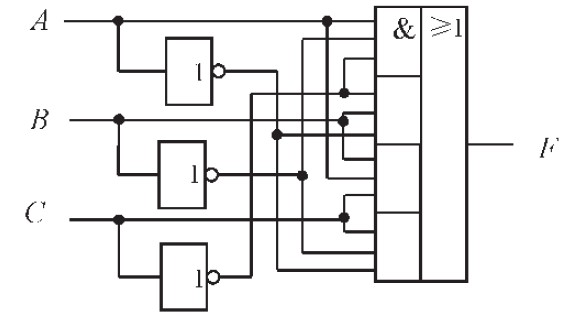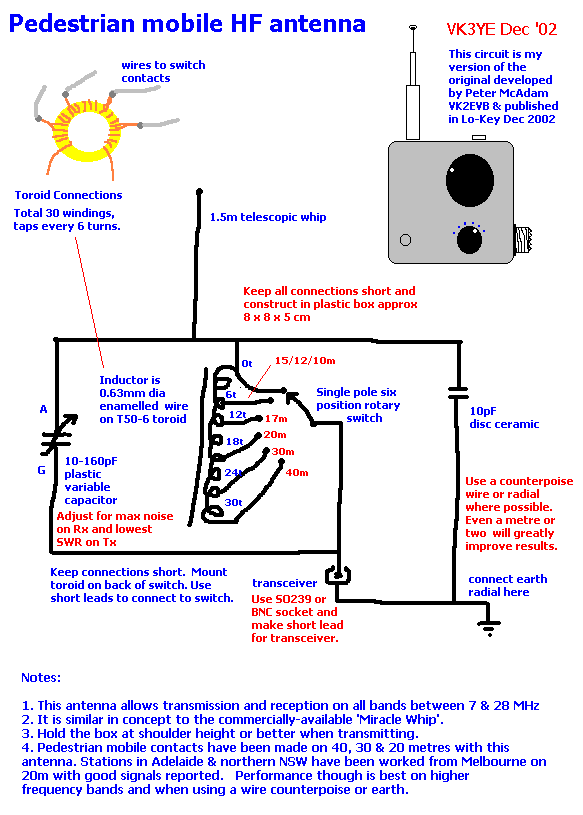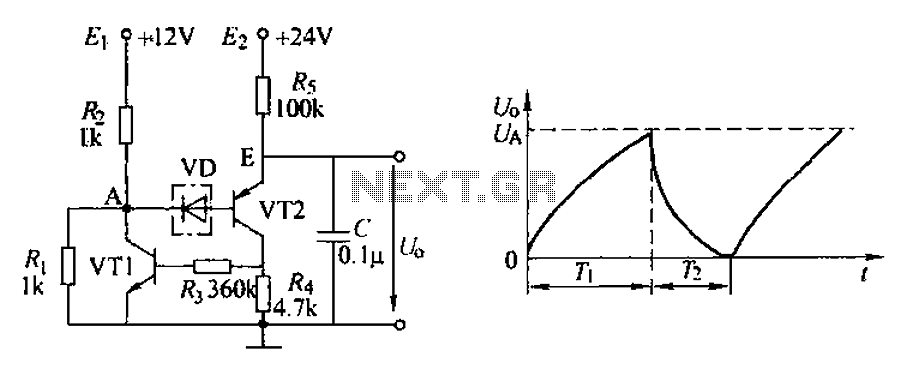
Temperature Sensor Circuit With LM335 IC

In this circuit, the LM335 is utilized as a temperature sensor, an integrated circuit that converts ambient temperature into an equivalent output voltage.
The LM335 is a precision temperature sensor that provides a linear output voltage proportional to the absolute temperature in Kelvin. The output voltage is typically 10 mV per Kelvin, allowing for easy interpretation of temperature readings. The sensor is designed to operate over a wide temperature range, typically from -40°C to +100°C, making it suitable for various applications.
In a typical configuration, the LM335 requires a power supply, usually between 1.5V and 40V, to function correctly. The output pin of the LM335 is connected to an analog-to-digital converter (ADC) or a microcontroller to facilitate digital processing of the temperature data. A resistor may be connected in series with the output to limit the current and protect the device from potential overcurrent conditions.
Calibration of the sensor is essential for accurate temperature readings. This can be achieved by adjusting the output voltage using a reference voltage or by incorporating calibration coefficients in the software that processes the digital output. Additionally, the circuit may include filtering capacitors to reduce noise and improve the stability of the output signal.
For improved accuracy, the LM335 can be housed in a thermal mass to ensure that it responds quickly to temperature changes while minimizing the effects of ambient temperature fluctuations. Proper placement of the sensor within the environment is crucial for achieving reliable temperature measurements.
Overall, the LM335 temperature sensor circuit is a versatile and effective solution for temperature monitoring and control in various electronic applications.In this circuit LM335 used to temperature sensor circuit, an IC that converts the ambient temperature into an equivalent output voltage .. 🔗 External reference
The LM335 is a precision temperature sensor that provides a linear output voltage proportional to the absolute temperature in Kelvin. The output voltage is typically 10 mV per Kelvin, allowing for easy interpretation of temperature readings. The sensor is designed to operate over a wide temperature range, typically from -40°C to +100°C, making it suitable for various applications.
In a typical configuration, the LM335 requires a power supply, usually between 1.5V and 40V, to function correctly. The output pin of the LM335 is connected to an analog-to-digital converter (ADC) or a microcontroller to facilitate digital processing of the temperature data. A resistor may be connected in series with the output to limit the current and protect the device from potential overcurrent conditions.
Calibration of the sensor is essential for accurate temperature readings. This can be achieved by adjusting the output voltage using a reference voltage or by incorporating calibration coefficients in the software that processes the digital output. Additionally, the circuit may include filtering capacitors to reduce noise and improve the stability of the output signal.
For improved accuracy, the LM335 can be housed in a thermal mass to ensure that it responds quickly to temperature changes while minimizing the effects of ambient temperature fluctuations. Proper placement of the sensor within the environment is crucial for achieving reliable temperature measurements.
Overall, the LM335 temperature sensor circuit is a versatile and effective solution for temperature monitoring and control in various electronic applications.In this circuit LM335 used to temperature sensor circuit, an IC that converts the ambient temperature into an equivalent output voltage .. 🔗 External reference





